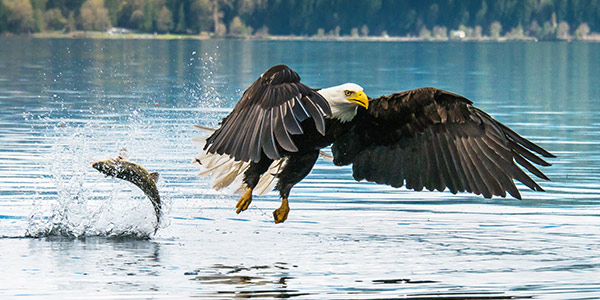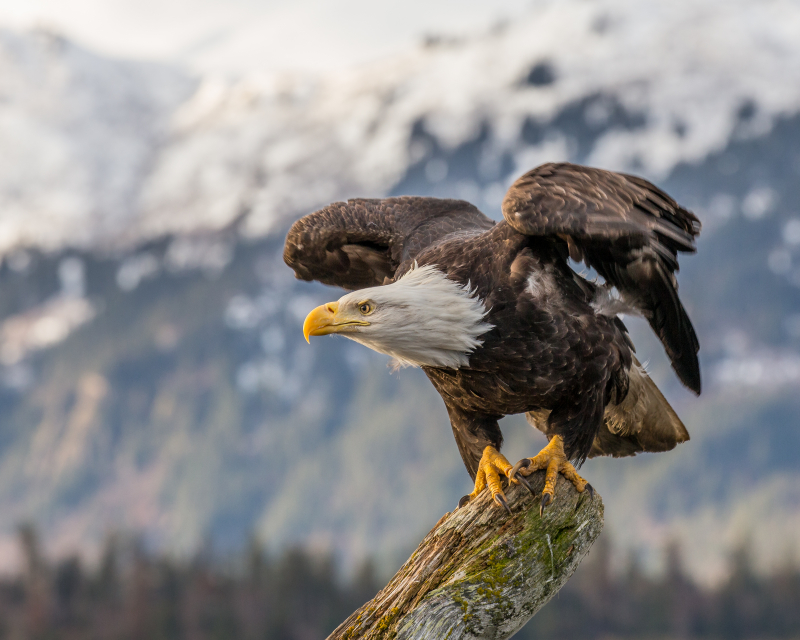Bald Eagle
The Bald Eagle is a classic icon of the United States, standing for strength, courage, and freedom. Chosen in 1782 as a symbol for our national emblem, today the bald eagle is depicted on a variety of official U.S. items, including passports, quarters, and the one-dollar bill. They are North American birds. Their range extends from the Mexico border through the United States and Canada. The birds are extremely populous in Alaska. They can be seen year-round in Alaska, along the East and West coasts, the Rocky Mountains, and the Mississippi River. The rest of the United States only sees bald eagles during the winter and their migration.
Bald eagles are huge, carnivorous raptors with a hooked yellow beak and brown body and wings. They also have a white head and tail. They have sharp black talons on the bottoms of their golden feet. Young bald eagles have a radically different appearance from adults; they are almost totally brown with sporadic white patterns on their chest and undersides of wings. The bill of the juvenile changes from a dark brownish-black to a yellow hue as it ages, and the head and tail become white. Bald eagles reach heights of 2.5 to 3 feet (0.7 to 0.9 meters), and their remarkable 6.5-foot wingspan (two meters). The size of female bald eagles is bigger than that of men, yet they are both the same hue.












